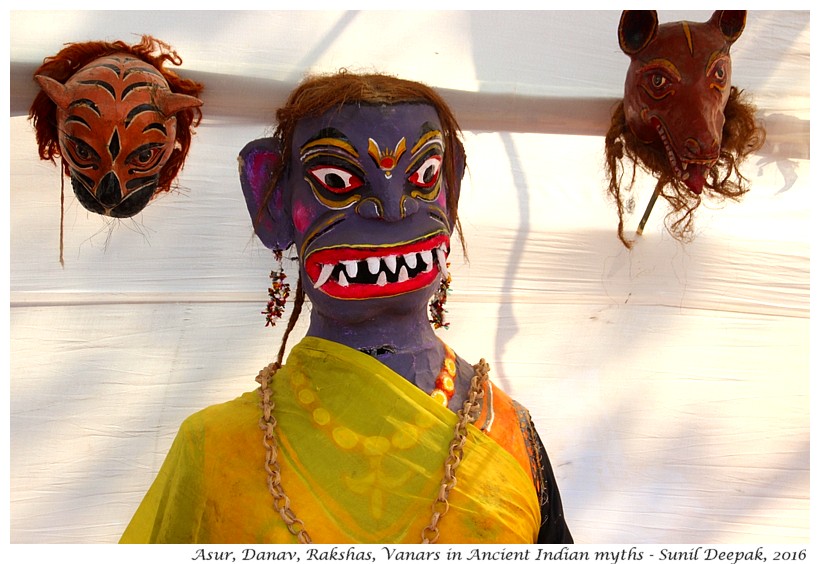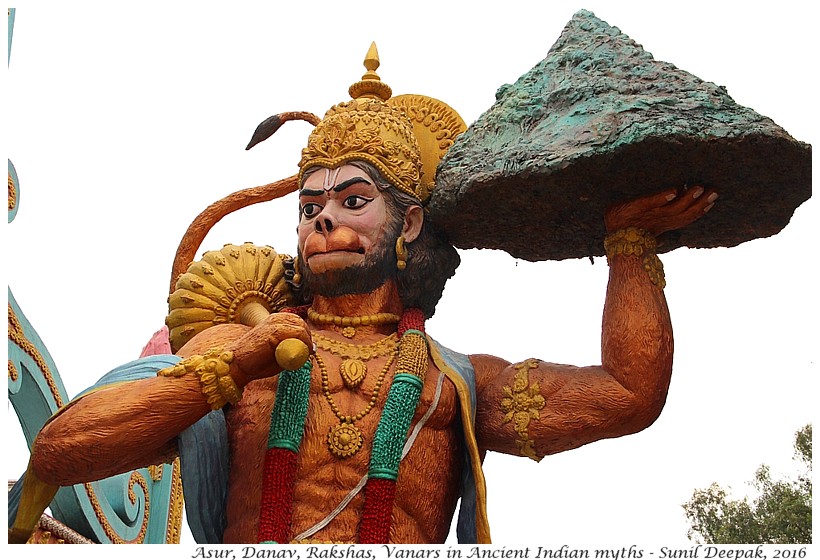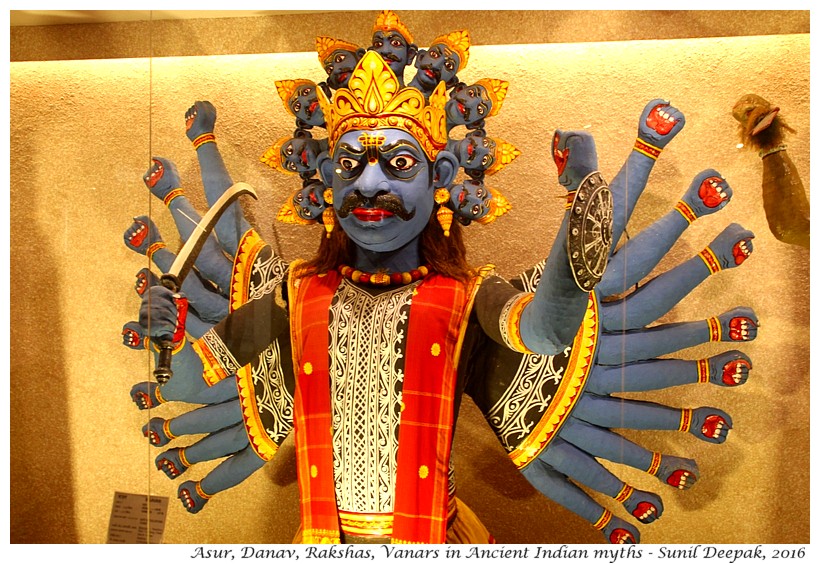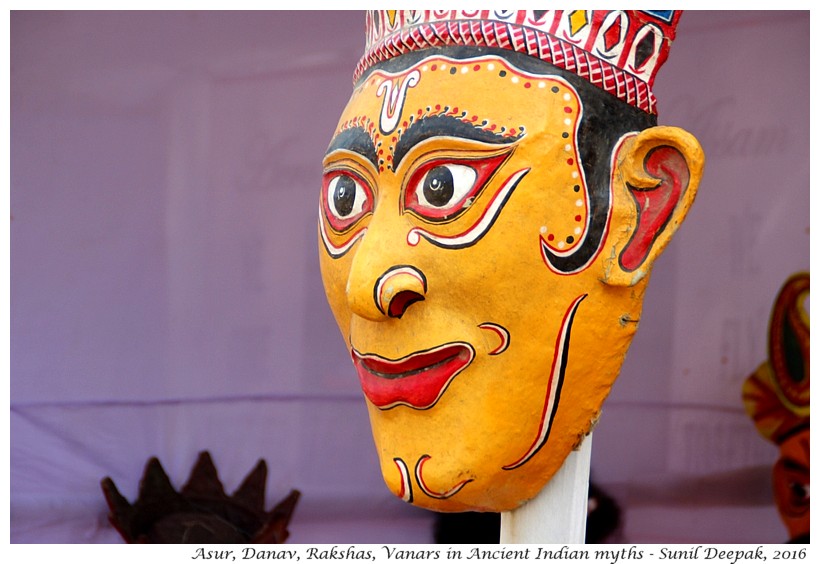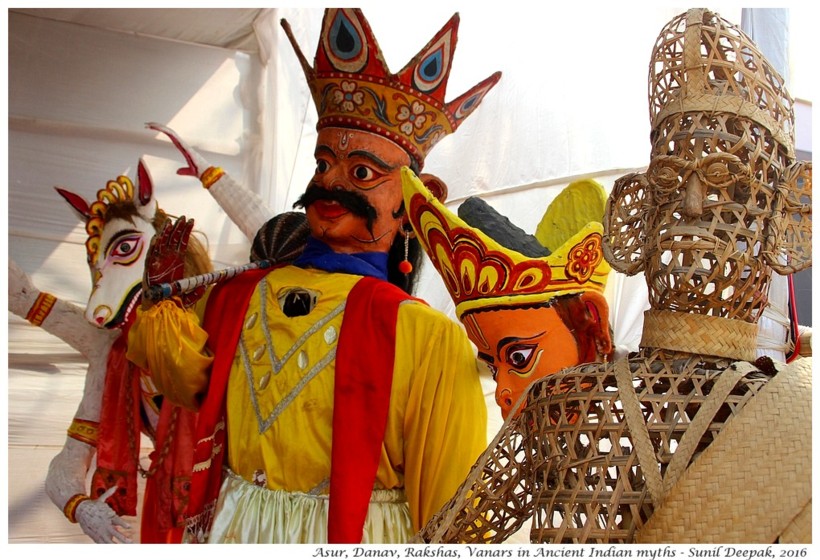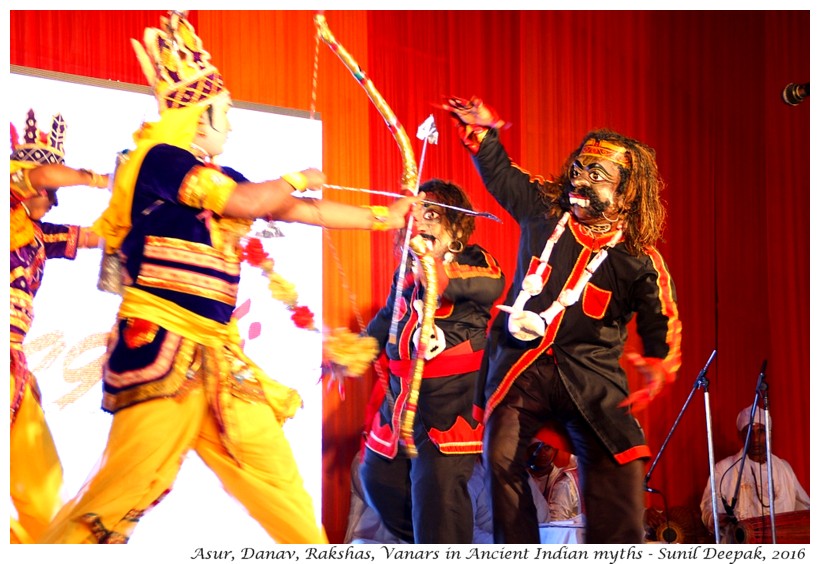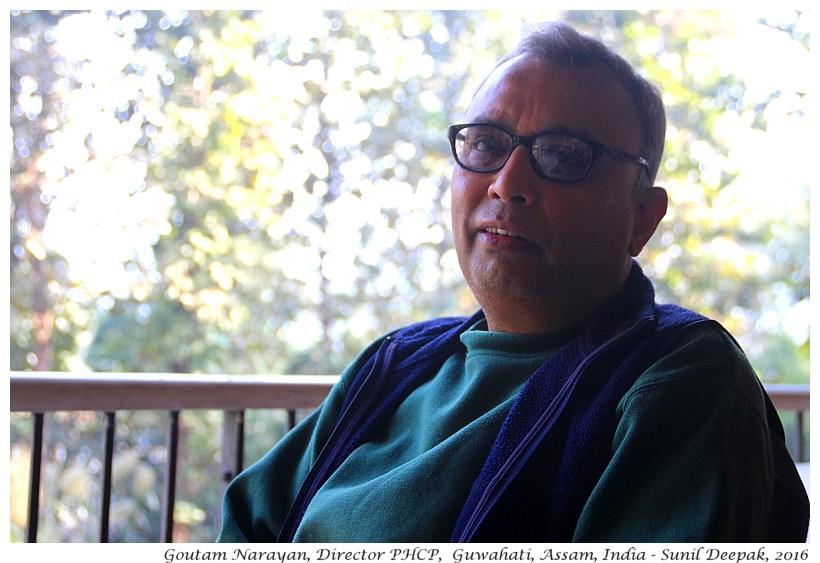
We were visiting the Pygmy Hog Breeding Centre (PHBC) in Basistha in the periphery of Guwahati, of which he is the founder-director. Another breeding centre is located at Potasali near Nameri National Park.
When I had first arrived to live in Guwahati in December 2014, I did not know anyone in this city. However, I had the contacts of Goutam and his wife, Nandita, given to me by my sister. So I had gone to visit them at their home. That was the first time I had heard about Goutam’s work with pygmy hogs. “I want to come and see your work with these hogs”, I had told him. Finally, in January 2016 I had managed to visit it.
WHY SAVE THE PYGMY HOGS?
Goutam thinks that this tiny and shy animal is a very good indicator of the ecological conservation of its local environment, “The big animals like tigers or rhinos, they can thrive in lots of places and even if the environment changes, they can survive. But not the pygmy hogs. They need the specific tall wet grassland plains at the foothills and without it, they will not survive. So when animals like the pygmy hog start disappearing, you know that something is wrong and the environment is getting damaged. It is a sensitive indicator of the change in the environment.”
Pigs, hogs, boars and swines are different words used to talk about the animals of the suid family, though usually pig is used for domesticated animals while hogs and boars are used for wild animals.
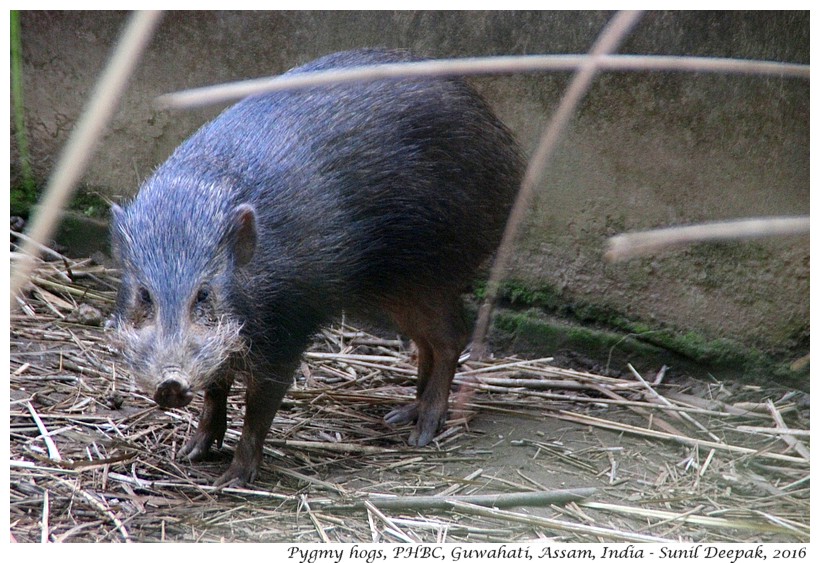
The pygmy hog is the smallest suid. The grown adult is about 65 cm long and 25 cm tall, weighing around 8 or 9 kg. It is also a very shy animal so it is very difficult to see in the wild. There was a time when these pygmy hogs were found in several places along the Himalayan foothills at the India-Bhutan border extending westwards to India-Nepal border to eastern parts on Assam-Arunachal Pradesh borders. However, now these animals are almost extinct except for a small area in Manas National Park, which has around 200 pygmy hogs. During the last few years, 94 animals born and raised in Goutam’s breeding centre have been released in Sonai Rupai Wildlife Sanctuary and Orang National Park in Assam.
HOW DID PYGMY BECAME ALMOST EXTINCT?
So what has happened to these pygmy hogs? How had they become extinct? Often the extinction of animals is linked to excessive killings by humans, but that is not the case with the pygmy hogs. Since they are shy animals hiding in the wet grasslands, they are not easy to hunt. Also, they are small, so have little meat to justify their hunting. Rather, their extinction is linked to the destruction of the tall wet grasslands.
“They are very finicky animals, they require that tall thatch grass and without it they can not survive. They make their homes underneath a bunch of that grass and if they can not find it then they will have no homes, they will not breed and they will die”, Goutam had explained.
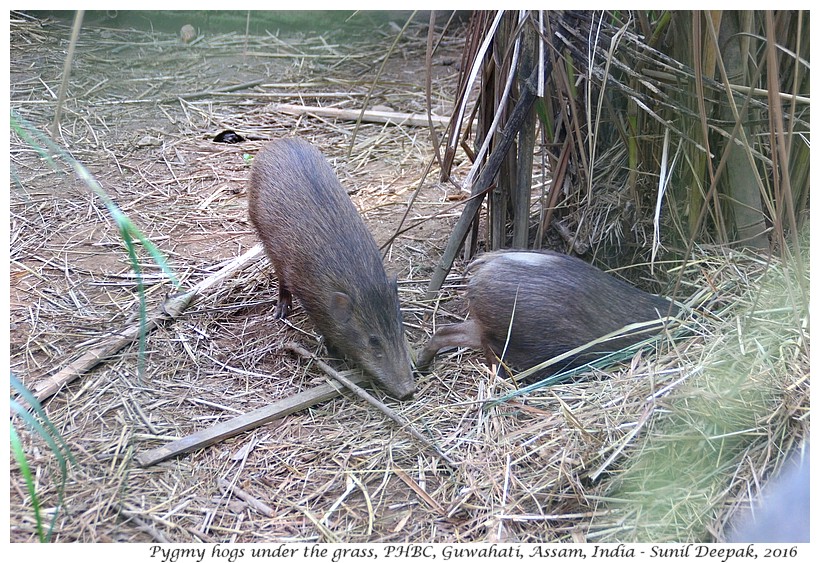
Goutam is a field biologist and had started with the Bombay Natural History Society (BNHS) under Salim Ali, the noted Indian ornithologist. Goutam had earlier worked with Bengal Florican (Houbaropsis bengalensis), another endangered species that shares its habitat with the pygmy hog. After working with Bengal Floricans in Manas grasslands he was offered to work with Pygmy Hog Conservation Programme by the Durrell Wildlife Conservation Trust, founded by Gerald Durrell in Jersey, Channel Islands.
The wet grasslands habitat has one of the richest in bio-diversity in India, so it is important to safeguard it. Pygmy hogs are one of the most sensitive indicators of the safeguarding of this habitat. These wet grasslands serve as buffer against floods in rainy season while maintaining high groundwater levels in dry season, indirectly benefiting farming communities living in the fringe areas.
A few years ago, in an interview Goutam had expressed his desires of the changes he would like to see, “I would (like to) banish the indiscriminate dry season burning of grasslands every February and March. I may allow some controlled fire till mid January to clear dried grass debris and to delay the transformation of these successional grasslands into a different habitat but not the highly destructive hot burns. Secondly, I would convert hoards of cattle grazing the grasslands bare and trampling the soil hard into a few high yielding breeds of stall-fed animals. Thirdly, I would transform the mindset of planners who want to construct scores of mega dams on Himalayan rivers. They should instead be planning for ecologically and economically viable smaller alternatives that do not cause flash floods in the grassland plains and downstream areas when water is released from reservoirs, particularly during the monsoons.”
PYGMY HOG CONSERVATION PROGRAMME
In the pygmy hog breeding centre in Guwahati, the hogs are kept in separate enclosures according to the genetic lines. Since their numbers are so small, it is important to ensure the genetic lines to maximise their genetic diversity. Pygmy hog is the only member of the genus Porcula.
The Pygmy Hog Conservation Programme (PHCP) has a significant research component. An important part of the research is genetic and endocrinal studies of the hogs. While we were visiting it we met a researcher Shyamalima Buragohain who is working on PHCP’s collaborative project with CCMB-LaCONES (Laboratory for Conservation of Endangered Species of the Centre for Cellular and Molecular Biology, Hyderabad) on the endocrine status of pygmy hogs by studying their excreta.
The breeding programme had started with nine pygmy hogs captured in the Manas National Park in 1996 and in 2013. Over the years, their numbers have slowly increased. When we visited, PHCP had 85 hogs. Every year around 12 hogs are released in protected and restored grasslands under a planned reintroduction project. A pre-release centre has been built in Nameri Tiger Reserve where the animals get used to living in the grasslands in a gradual manner under minimal human contact for 5 months, before being released. At the same time, together with forest authorities, programme for rebuilding the grassland habitats of the hogs are started by controlling the burning of the grass and livestock grazing.
HISTORY OF INTEREST IN SAVING THE PYGMY HOGS
The story of conservation of pygmy hogs is linked to the British colonial history of Assam. A British born tea garden owner and naturalist Edward Pritchard Gee, who had decided to stay in India after 1947, is known for the identification of Golden Langurs and conservation of one horned rhinos in Assam. In 1964 he had written the book “The Wildlife of India” in which he had written that probably the pygmy hog species was already extinct.
The 1971 rediscovery of pygmy hog is credited to another British tea planter from the Jersey island, John Tessier-Yandell. Under his guidance a tea garden manager had found pygmy hogs being sold in a tea garden market near the Barnadi Reserve Forest (now a Wildlife Sanctuary where the pygmy hogs will be released by PHCP in May 2016) in Darrang (now Udalguri) district of north-western Assam and John had written a report that was published in the journal “Animals”. The tea company had set up a small project for the conservation of the pygmy hog, but unfortunately it had failed to maintain these animals in captivity.
Following its rediscovery, during 1970s-80s different surveys had shown the existence of pygmy hogs in different parts of Assam, however these had gradually disappeared with the destruction of the wet grasslands habitats.
The international Wild Pig Specialist Group was setup under the Species Survival Commission (SSC) of the International Union for the Conservation of Nature (IUCN), under William Oliver in 1980. As an acolyte of Gerald Durrell, in whose zoo in Jersey he started working in 1974, William Oliver promoted the role of zoos and captive breeding. For saving the pygmy hogs Oliver had drawn up his first action plan in 1977, but was unable to get the state of Assam and the government of India to agree to protect them properly until 1995, when he had asked Goutam Narayan to join this project.
THE FUTURE
In September 2015, Goutam Narayan has received the International Harry Messel award “in recognition of his pivotal role on leading the Pygmy Hog Conservation Programme in north-eastern India since 1995, thus saving a whole genus from extinction, and his long service to the SSC Wild Pig Specialist Group”.
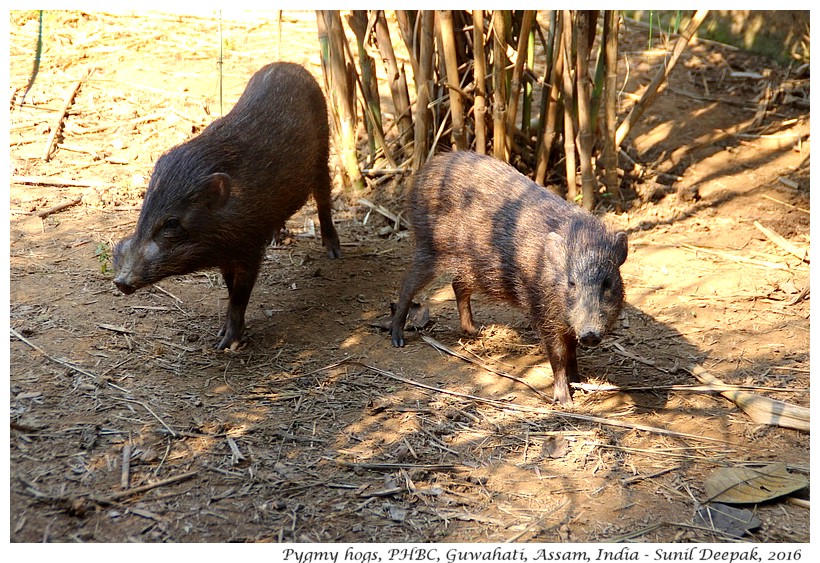
Regarding the future of the Pygmy Hog species and its habitat, Goutam is optimistic and says, “Hopefully one day the importance of wild habitats such as the wet grasslands will be recognised for their role in providing significant ecosystem services to the local communities and they will be protected and managed using sensitive indicator species, thereby helping both the highly endangered wildlife and local people. Till that day comes the conservationist should help preserve at least some small pockets of these habitats lest everything is lost!”
***

